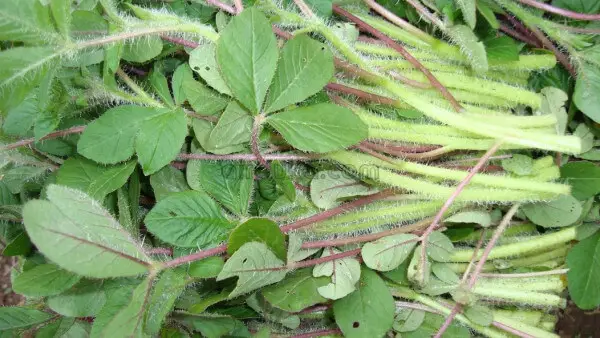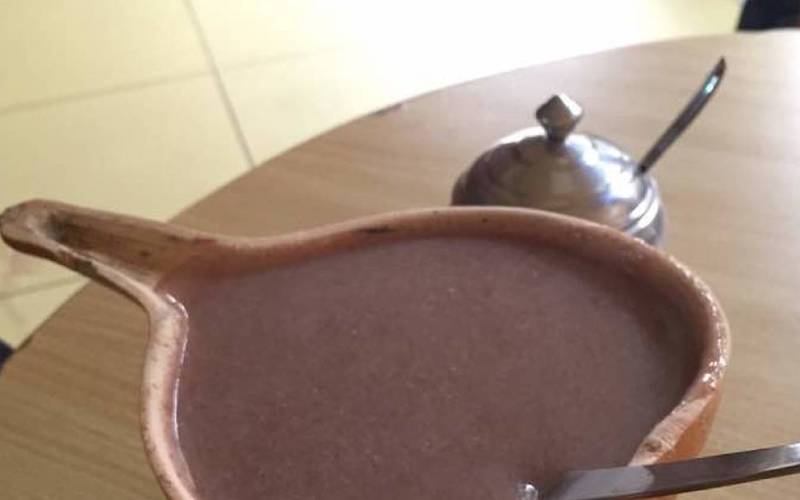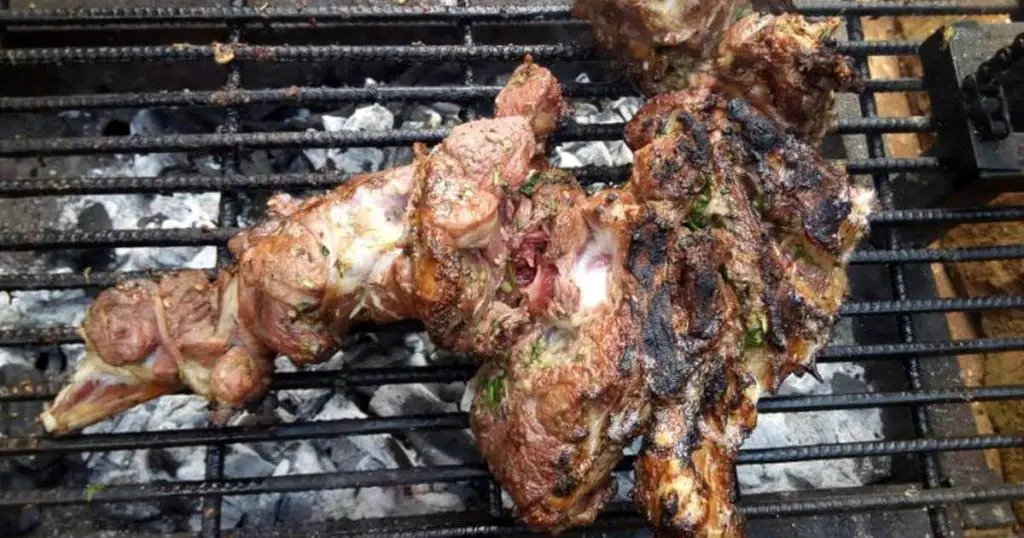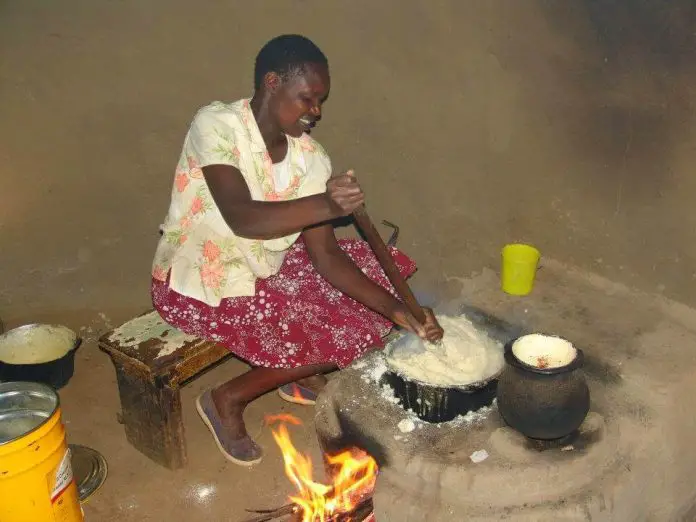When talking about the richness of Kalenjin culture, their traditional food comes somewhere on top of the list.
Kalenjin people are renowned for their delicious and healthy traditional foods.
Here are the top 10 Kalenjin traditional foods that you must try.
1. Mursik

Mursik is a popular Kalenjin name for fermented milk.
It is made by collecting fresh milk and storing it in a gourd. It is then seasoned with a special additive called ‘Wosek’.
‘Wosek’ is obtained by burning a special tree called ‘Itet‘ (when dry) or ‘Senetwet’ (Fresh plant).
The milk is left to ferment for a few days, after which it is mixed and served with other foods such as ugali.
‘Mursik’ is, no doubt, one of the most delicious meals you will ever take in Kalenjin land.
Milk and ‘Mursik’ play a role in the identity of the Kalenjin people.
That is why they are nick-named ‘Kutitab chego’ (Tongue of milk).
2. Kimnyet
Second on the list is ‘Kimnyet’ (A Kalenjin name for Ugali).
If you think Kalenjin make their traditional ugali from maize flour, you are in for a rude shock.
Kalenjin people cook ‘kimnyet’ from crushed millet or sorghum, which is typically served with milk.
It is a nutritious and filling meal that is commonly eaten for supper or even lunch.
3. Isoik/ Soik
When it comes to ‘ng’wek’ (Vegetables), nothing beats the traditional ‘Soik’ (special edible herbs).
They grow on fertile grounds and under trees.
Traditionally, ‘Soik’ is harvested and cooked in a pot for not less than 20 minutes.
It can be seasoned with milk to add more flavor and then served with ‘kimnyet’ (Ugali).
It’s the one thing in Kalenjin dishes that will make you salivate at the dining table.
4. Isagek/ Sagek

Much like ‘Soik’, ‘Sagek’ are delicious herbs that are cooked and served with ‘Kimnyet’ (Ugali).
They are traditionally grown in well-prepared nurseries around homes.
You will likely find seeds of ‘Isagek’ in most Kalenjin homes, especially with the elderly.
Also, you will likely find some in the gardens around the home.
5. Mugelo
Many traditional Kalenjin still make ‘mugelo’ either for breakfast, lunch, or even dinner.
‘Mugelo’ is made by either heating or frying cereals like maize in a pot, sufuria, or a pan.
When they’re ready, they look and taste like popcorn.
‘Mugelo’ are usually served with tea or porridge.
6. Rongorik / Musarek

Rongorik/ Musarek is a Kalenjin name for porridge.
It is a special meal that has been used, from time immemorial, to feed babies and the sick.
Kipsigis call it ‘Rongorik’ while Nandi says ‘Musarek’.
Kalenjin porridge is special in many ways.
Millet or sorghum flour is fermented to give it some flavor.
It usually takes about 2 or 3 days to ferment it to the required flavor.
It’s then made into ‘Rongorik/ Musarek’ (porridge).
Sugar can be added to make it sweeter and tastier.
Today, many Kalenjin make it out of maize flour because millet and sorghum farming has dwindled.
7. Kiseri
‘Kiseri’ is a special meal made by combining grains and other foods like stem tubers and even bananas.
The Kalenjin people must have borrowed this word from Kikuyus who say ‘Githeri’.
Kalenjin make ‘Kiseri’ by combining grains like maize, beans, and French beans with other crop products like bananas, sweet potatoes, and Irish potatoes.
8. Pendo

‘Pendo’ is a Kalenjin name for meat.
Since they have long been cattle keepers, it is no secret that the Kalenjin people also obtain meat from their cattle for food.
There are many ways in which Kalenjin cook ‘Pendo’ (meat).
One popular one is ‘Kebeel’ or ‘Kewaatan’ which means ‘to grill meat’.
Most traditional Kalenjin grill their meat because it’s an easy and hassle-free cooking method.
Alternatively, Kalenjin can also cook ‘pendo’ by boiling it in pots.
This method gives a tasty stew that is rich in nutrients.
It is ideal for young children who typically take it with ‘kimnyet’ (Ugali).
9. Robwonik
‘Robwonik’ is a Kalenjin name for sweet potatoes.
Sweet potatoes can be eaten raw, grilled, or cooked in pots.
‘Robwonik’ are usually served with drinks like tea or milk. Some even take it with water.
10. Korotik

Perhaps you didn’t know that Kalenjin people also harvest blood from animals for food.
‘Korotik’ is blood obtained by cutting through a cow’s artery, in the neck region.
Once the blood is collected, it is seasoned with salt and allowed to solidify.
Some people cook it, while others take it raw.
‘Korotik’ can be served with ‘Kimnyet’ (Ugali). And it’s very delicious.
Parting Thoughts
From ‘Mursik’ (fermented milk), ‘Korotik’ (cow’s blood), ‘Musarek /Rongorik’ (millet porridge) to ‘Kimnyet’ (Ugali), there is something for everyone to enjoy.
So, the next time you are in Kalenjin land, make sure to try some of these mouth-watering dishes.
You may also want to check: Top 10 Kalenjin Fertility Herbs



